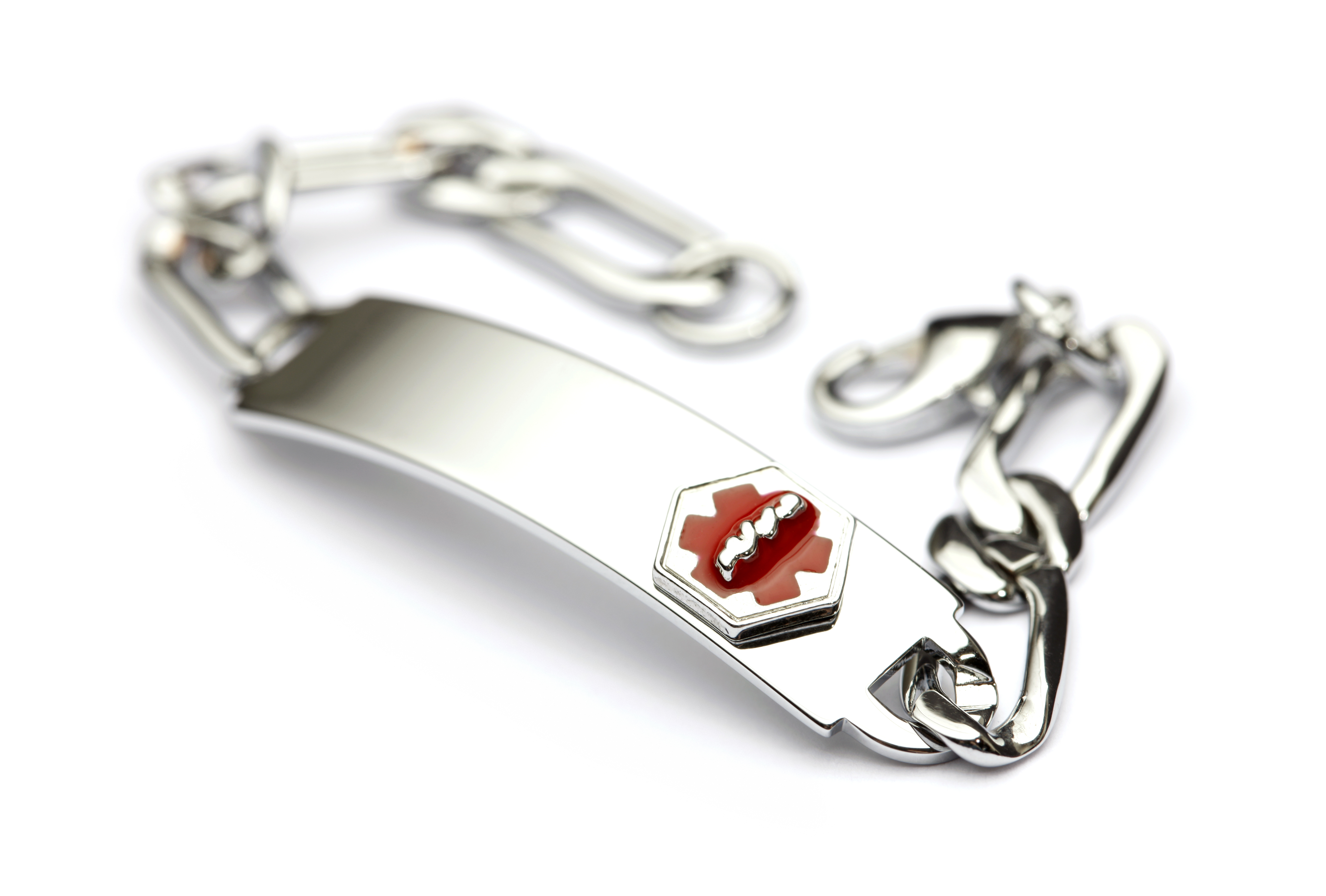Medical Identification
Wearing something that shows that you have a bleeding disorder could save your life in an emergency. If you are in an accident, you could be knocked out or not be able to talk. A medical ID (identification) would let the emergency team know that you have a bleeding disorder and how it is treated. Children need to have medical IDs of their own. Their parents won’t be with them all the time. Parents should mark strollers and car seats with medical ID.
 A MedicAlert® necklace or bracelet is a great medical ID. It stays on your body (so it's always with you!) and emergency teams are trained to look for it in an accident. It is a good idea to wear one even if you carry a card in your wallet that tells about your bleeding disorder. A MedicAlert® tag is engraved to tell what kind of bleeding disorder you have, your MedicAlert® ID number, and the MedicAlert® phone number. The emergency staff can find out what treatment you need by calling the phone number. You can buy the necklaces and bracelets from MedicAlert®, a nonprofit organization. Call 1-888-633-4298 or visit www.medicalert.org.
A MedicAlert® necklace or bracelet is a great medical ID. It stays on your body (so it's always with you!) and emergency teams are trained to look for it in an accident. It is a good idea to wear one even if you carry a card in your wallet that tells about your bleeding disorder. A MedicAlert® tag is engraved to tell what kind of bleeding disorder you have, your MedicAlert® ID number, and the MedicAlert® phone number. The emergency staff can find out what treatment you need by calling the phone number. You can buy the necklaces and bracelets from MedicAlert®, a nonprofit organization. Call 1-888-633-4298 or visit www.medicalert.org.
A child or teenager who doesn’t want to wear a necklace or a bracelet can wear a MedicAlert® around the ankle. It can be tucked under the sock. The sooner a young child starts wearing a MedicAlert®, the sooner they will become used to it.
If you don't want to wear a MedicAlert® emblem, you can ask a jeweler to engrave your own bracelet or necklace. It should at least tell the type of bleeding disorder you have and the severity (mild, moderate, or severe). The most important thing is to have information that others will quickly find in an emergency. A medical ID card carried in your wallet is a good back-up to a bracelet or necklace. It is not as reliable because it can be overlooked or get separated from your body. Put the medical ID card next to your driver’s license so it is more likely to be found. A wallet ID should list the following information:
- Name
- Address
- Type and severity of your bleeding disorder
- Blood type (for example, A+, O-, AB+)
- How you treat your bleeding disorder
- If you use factor concentrate, give the type, brand, and dose
- If you have an inhibitor
- What allergies you have
- The address and phone number of your HTC and doctor
Also carry a letter of identification when you travel. A letter can give details about your bleeding disorder diagnosis. The letter should tell what treatment to use for your bleeding. If you have Hemophilia, the letter should tell what dosage of factor you use (in units per kilogram) to raise your factor level to a certain percent. The Hemophilia Treatment Center (HTC) can give you this letter.
